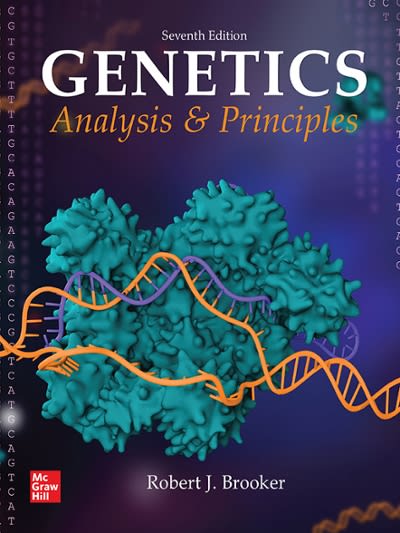A reversion is a mutation that restores a mutant codon back to a codon that gives a
Question:
A reversion is a mutation that restores a mutant codon back to a codon that gives a wild-type phenotype. At the DNA level, this type of mutation can be an exact reversion or an equivalent reversion:

An equivalent reversion produces a protein that is equivalent to the wild-type protein in structure and function. This outcome can occur in two ways. In some cases, the reversion produces the wild-type amino acid (in this case, glutamic acid), but it is expressed by a different codon than that in the wild-type gene. Alternatively, an equivalent reversion may substitute an amino acid structurally similar to the wild-type amino acid. In our example, an equivalent reversion has changed valine to an aspartic acid. Because aspartic and glutamic acids are structurally similar—they are acidic amino acids—this type of reversion can restore wild-type structure and function.
Here is the question. The template strand within the coding sequence of a gene has the following sequence:
3′–TACCCCTTCGACCCCGGA–5′
This template produces the following mRNA:
5′–AuGGGGAAGCuGGGGCCA–3′
The mRNA encodes a polypeptide with the following sequence:
methionine–glycine–lysine–leucine–glycine–proline.
A mutation changes the template strand to this sequence:
3′–TACCCCTACGACCCCGGA–5′
After the first mutation, another mutation occurs to change this sequence again. Is each of the following second mutations an exact reversion, an equivalent reversion, or neither?
A. 3′–TACCCCTCCGACCCCGGA–5′
B. 3′–TACCCCTTCGACCCCGGA–5′
C. 3′–TACCCCGACGACCCCGGA–5′
Step by Step Answer:






